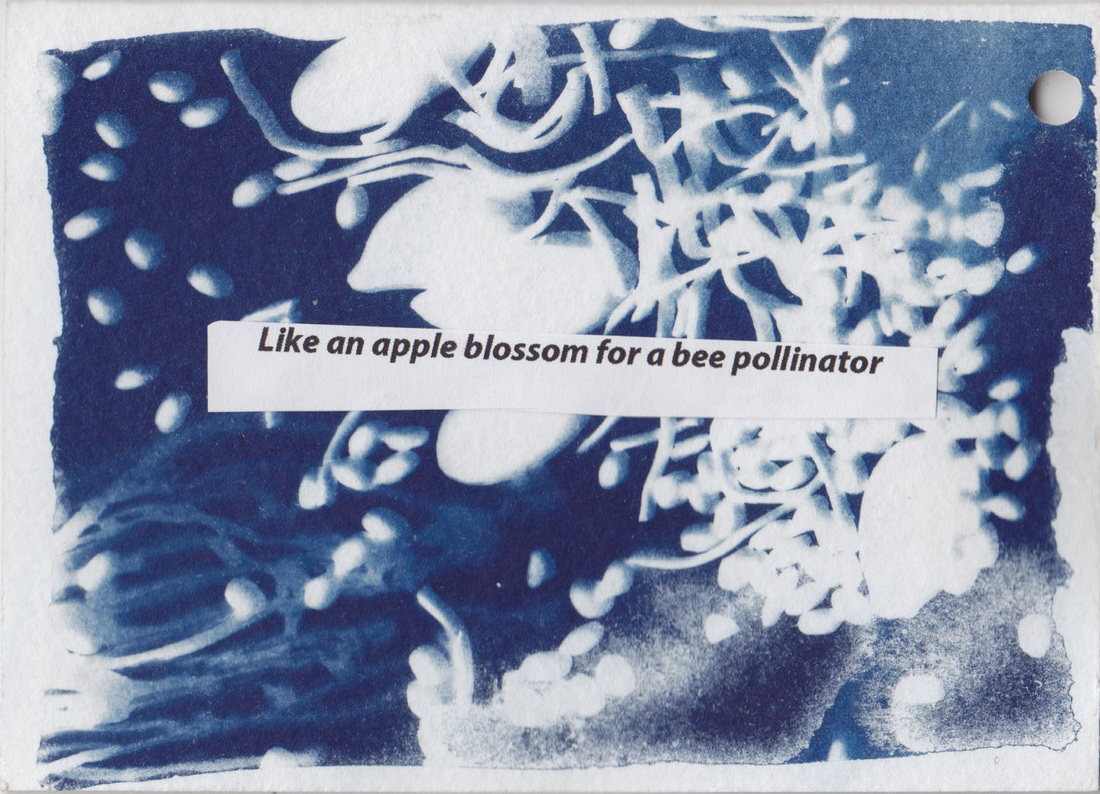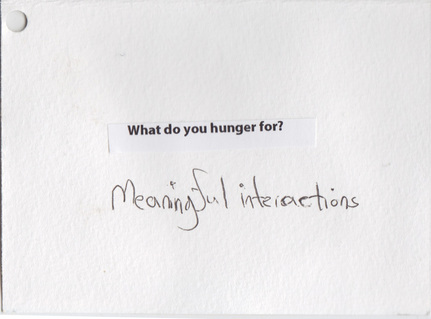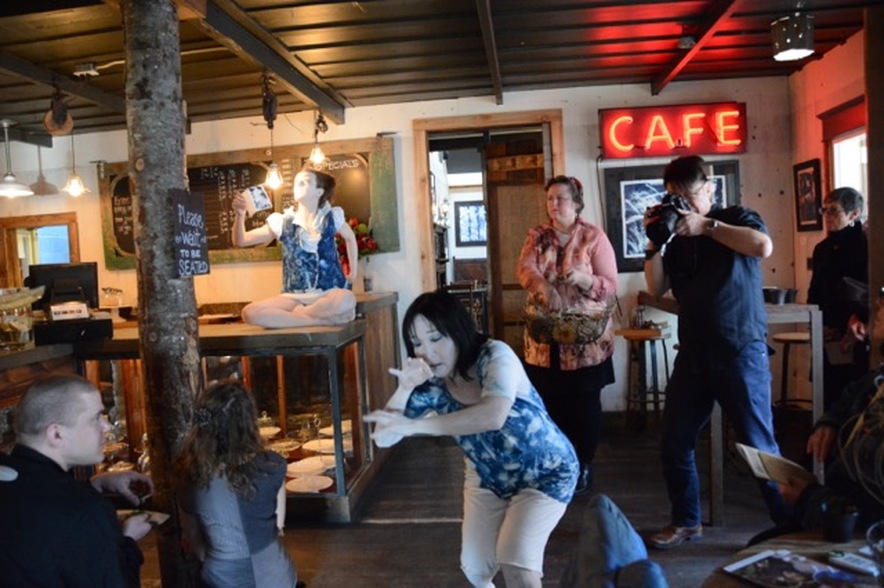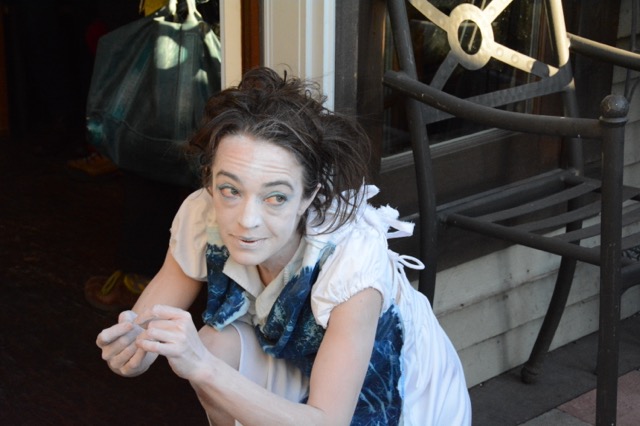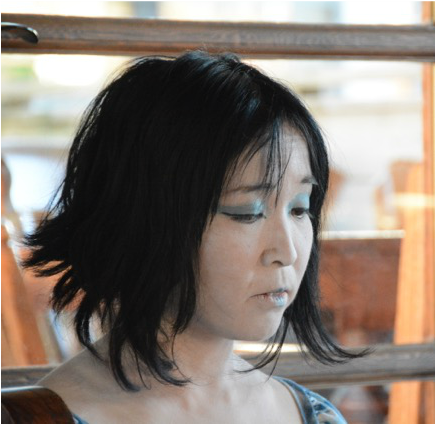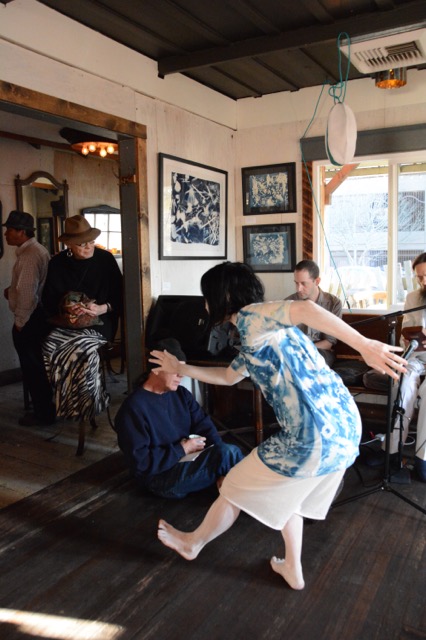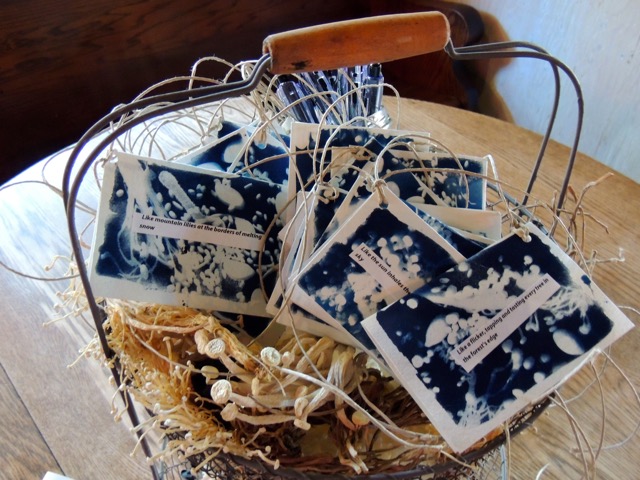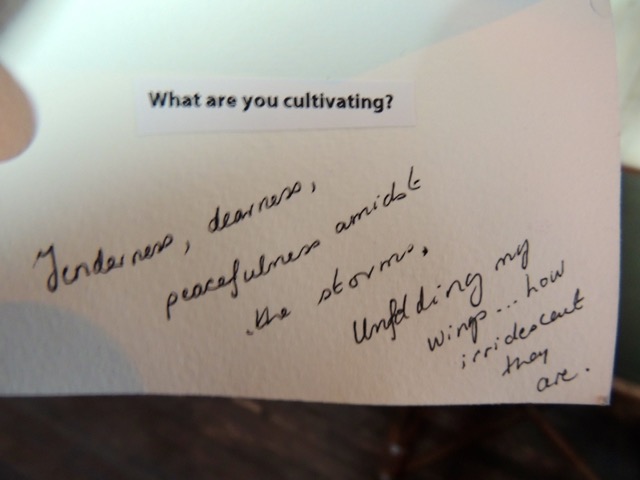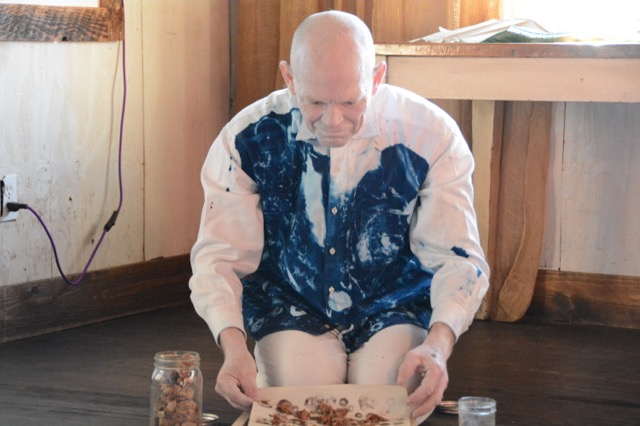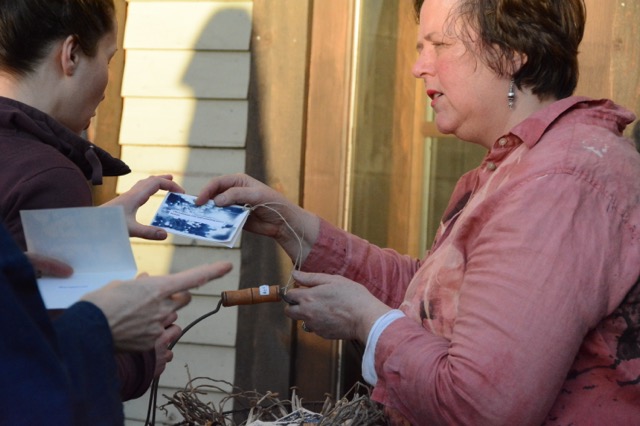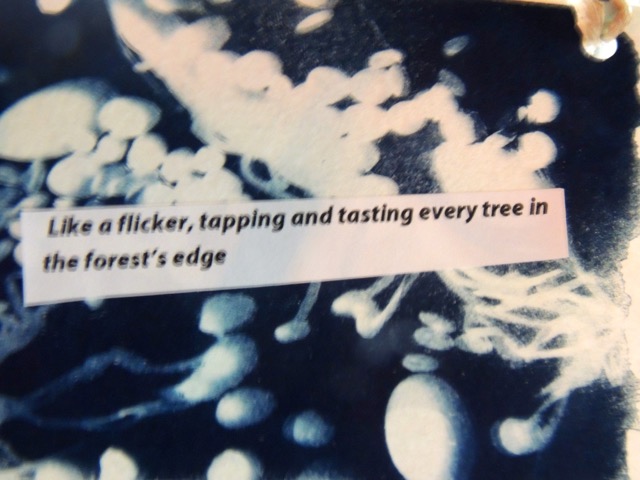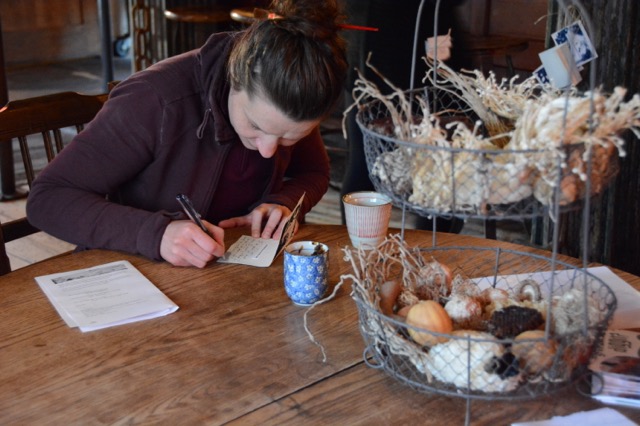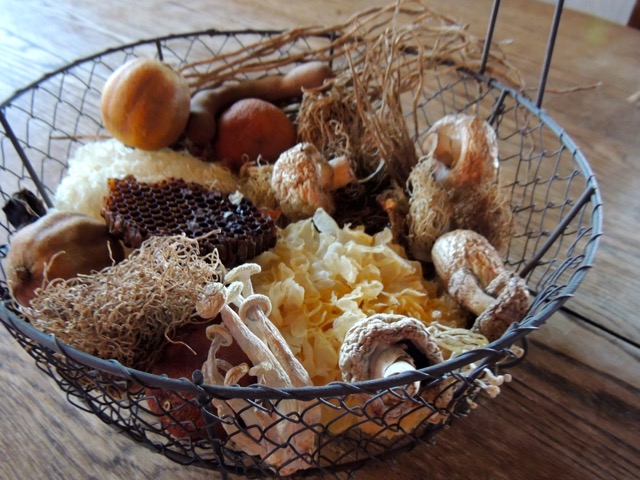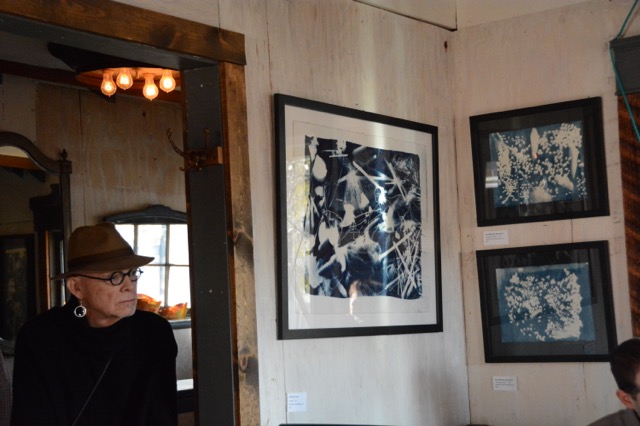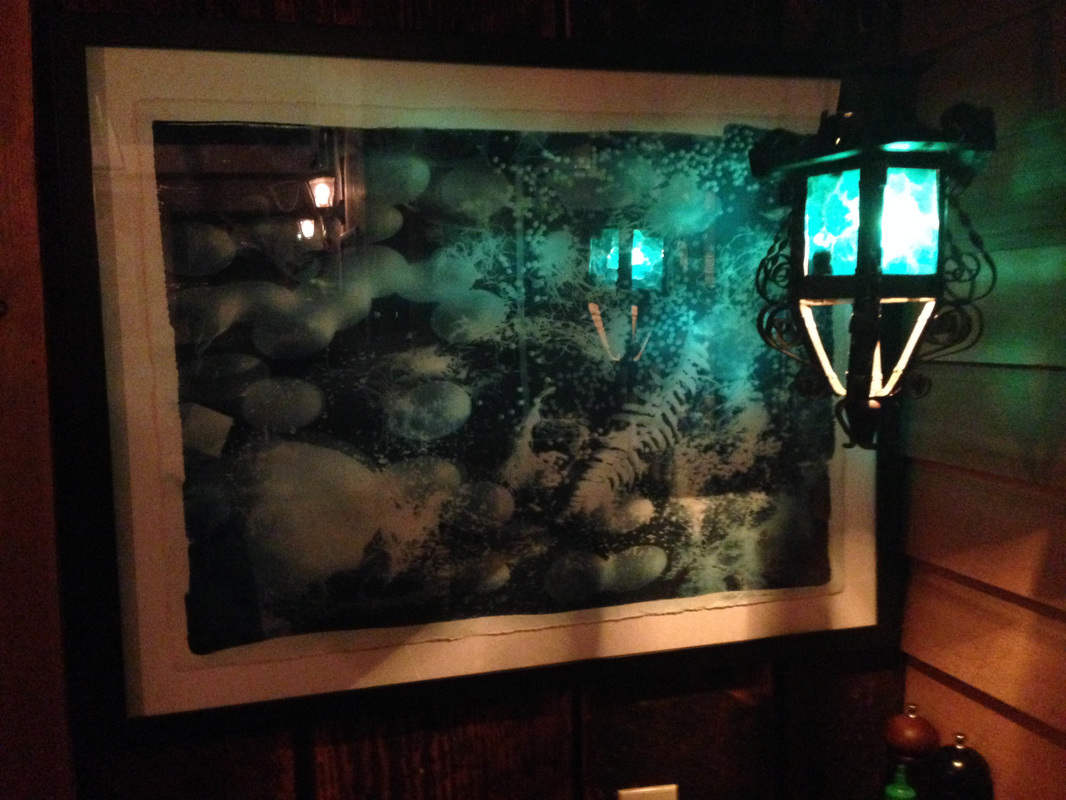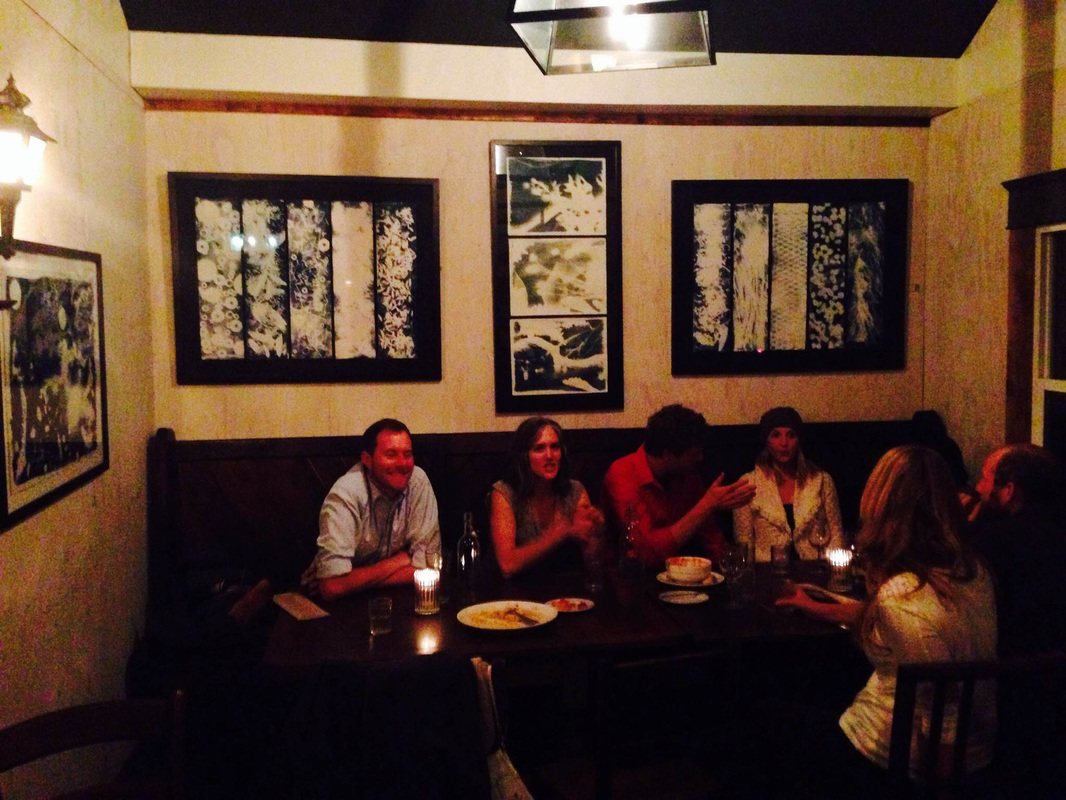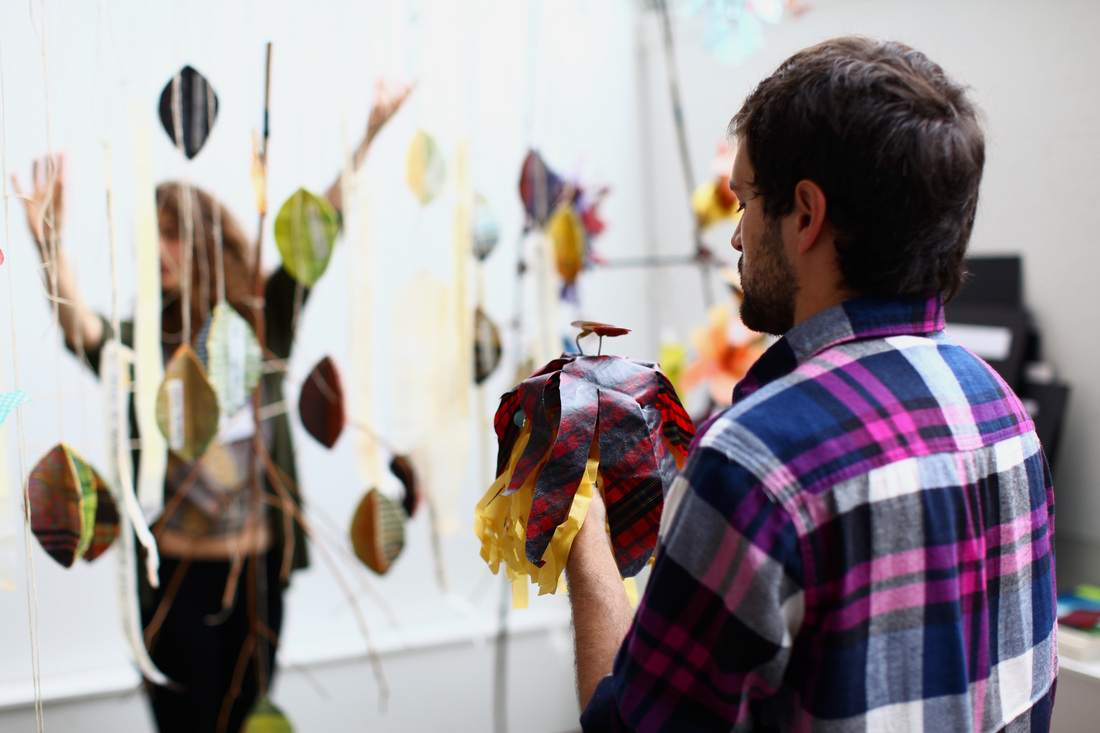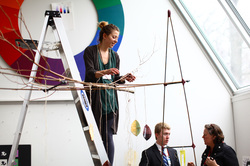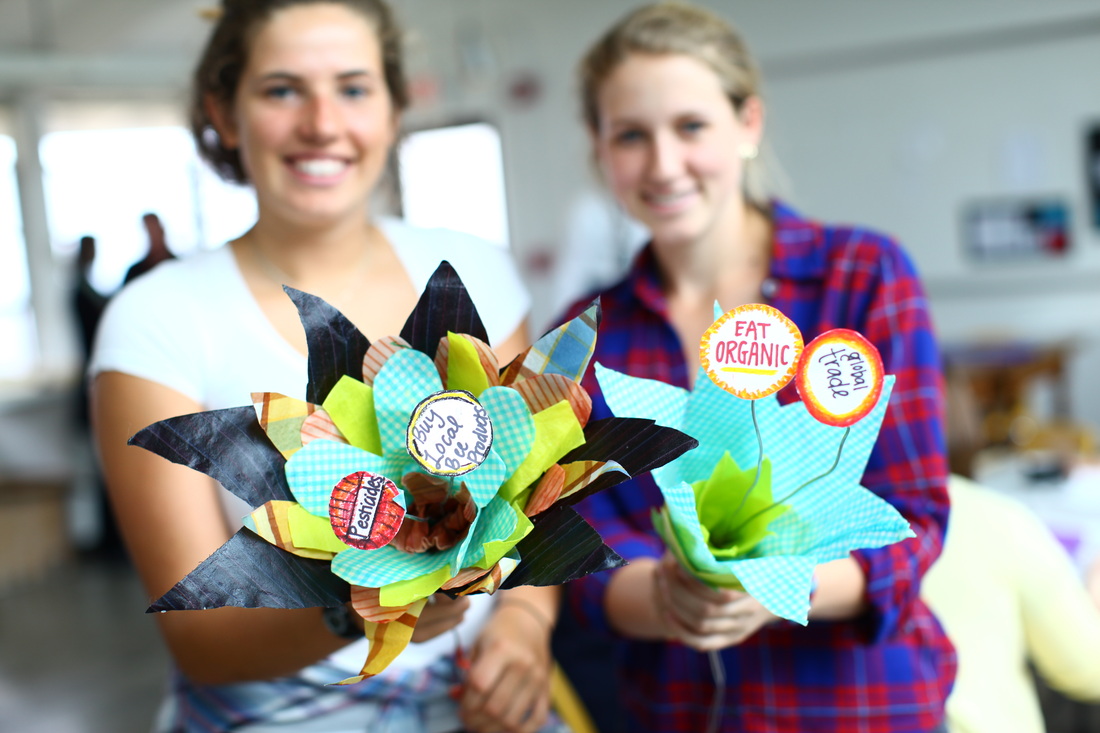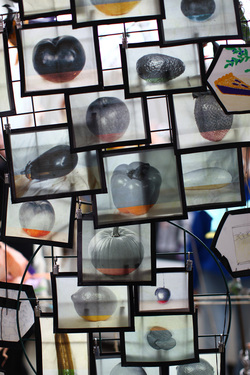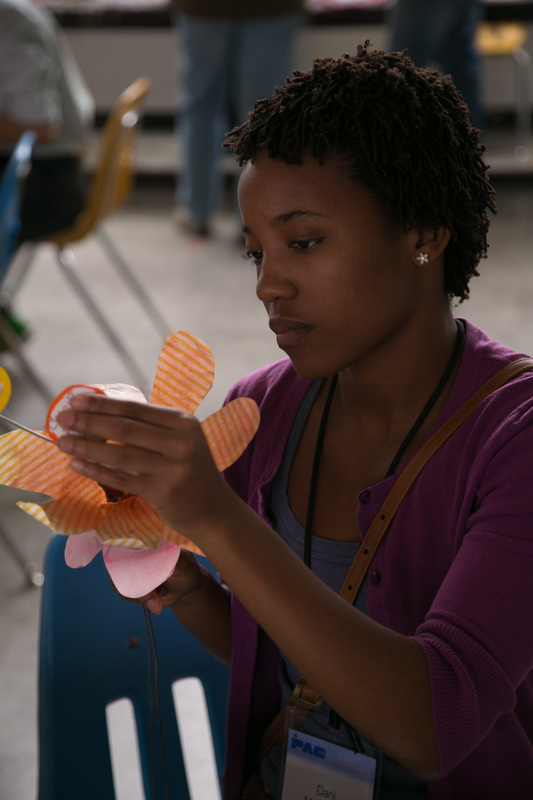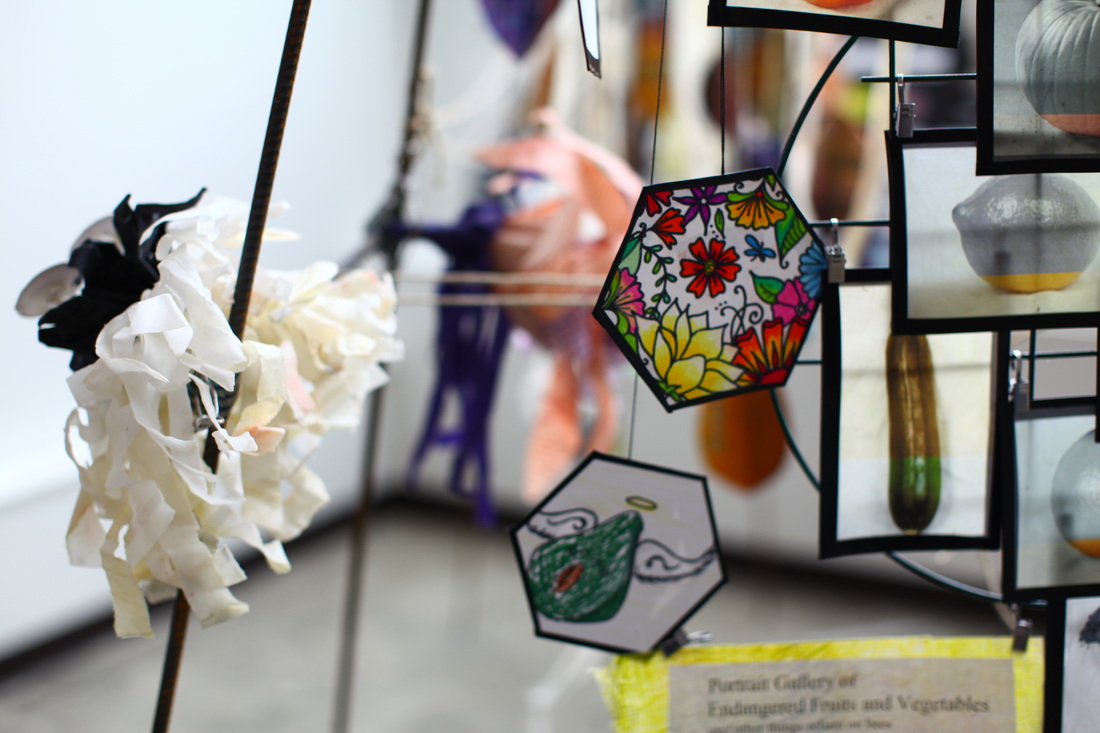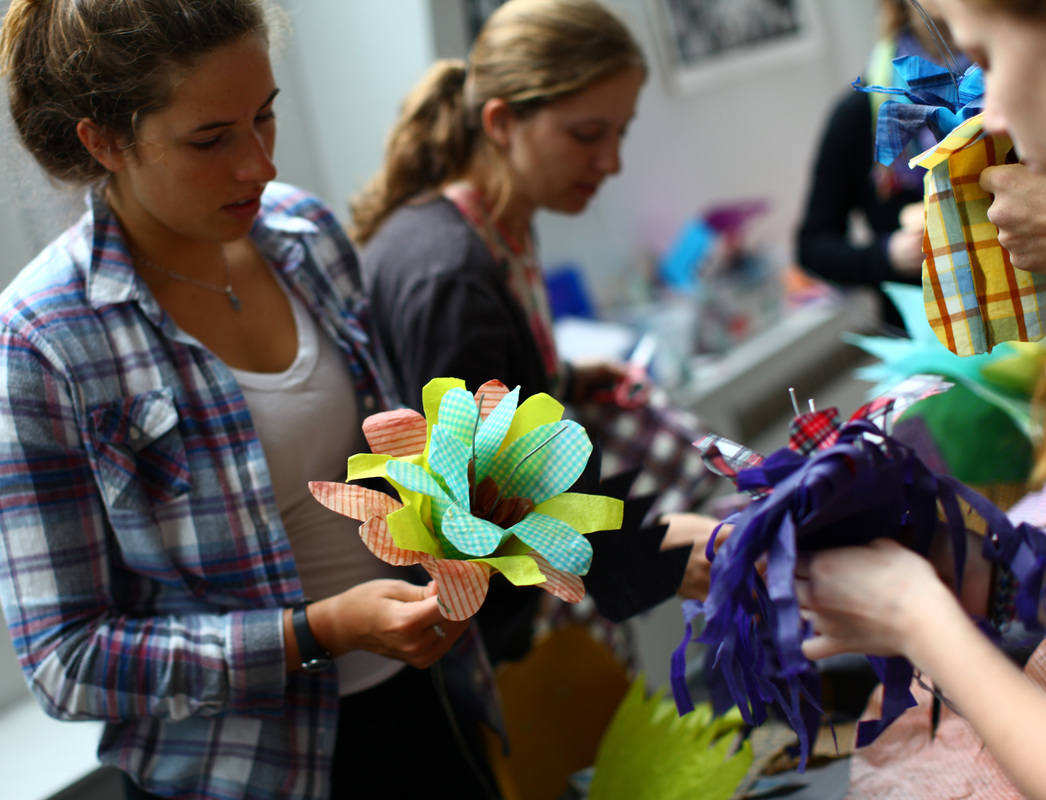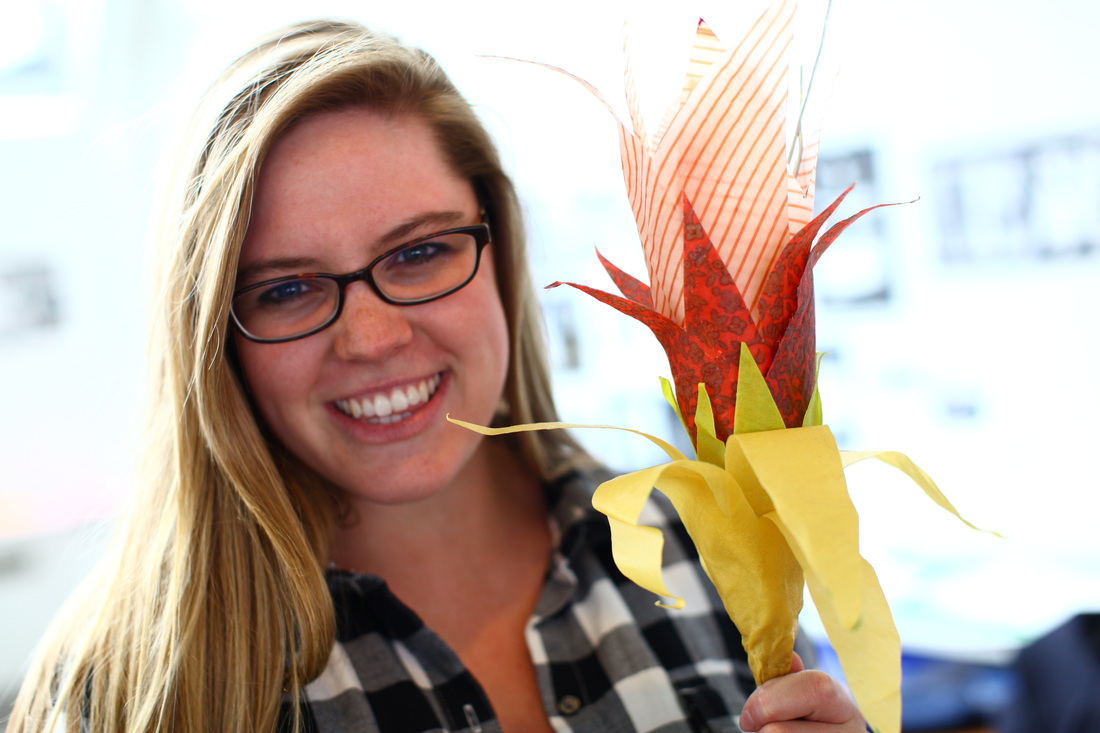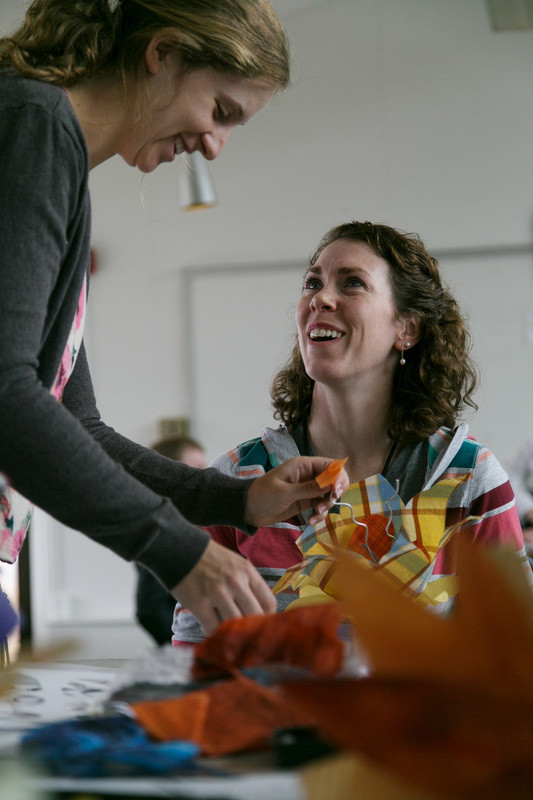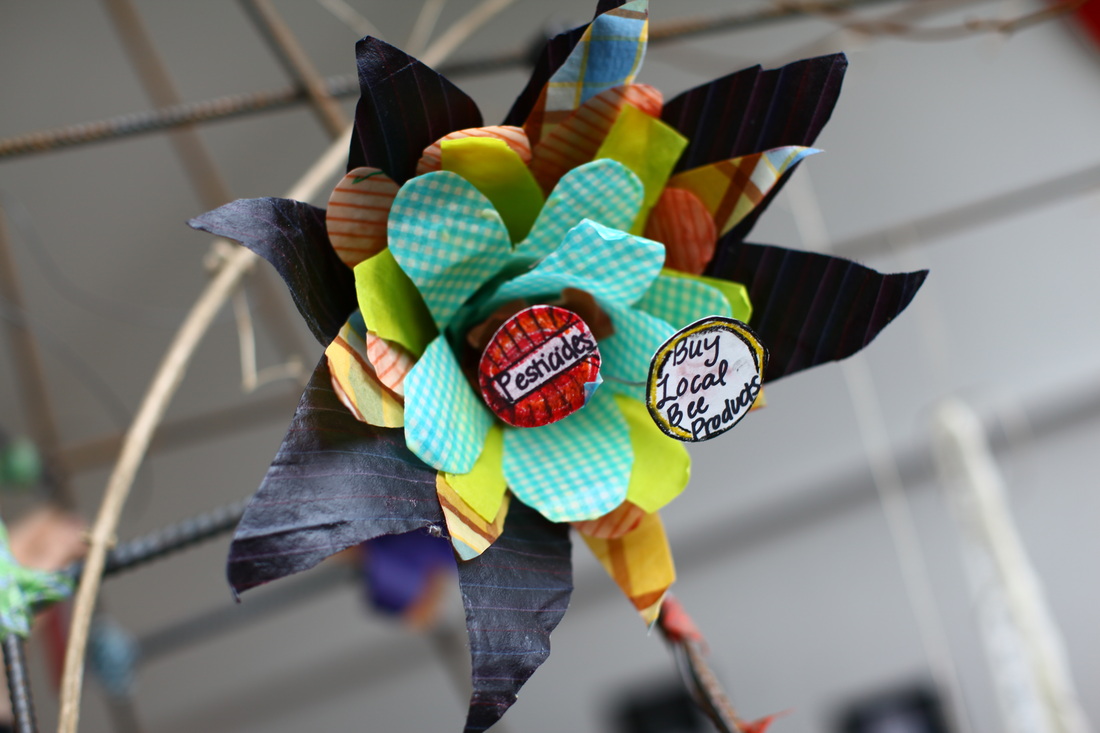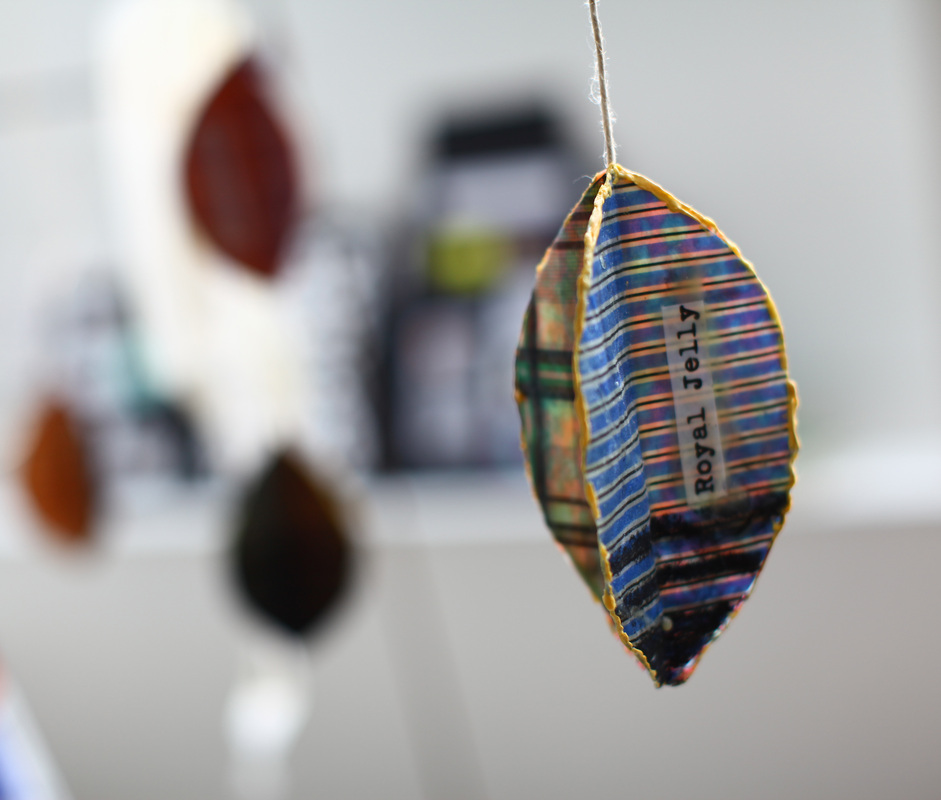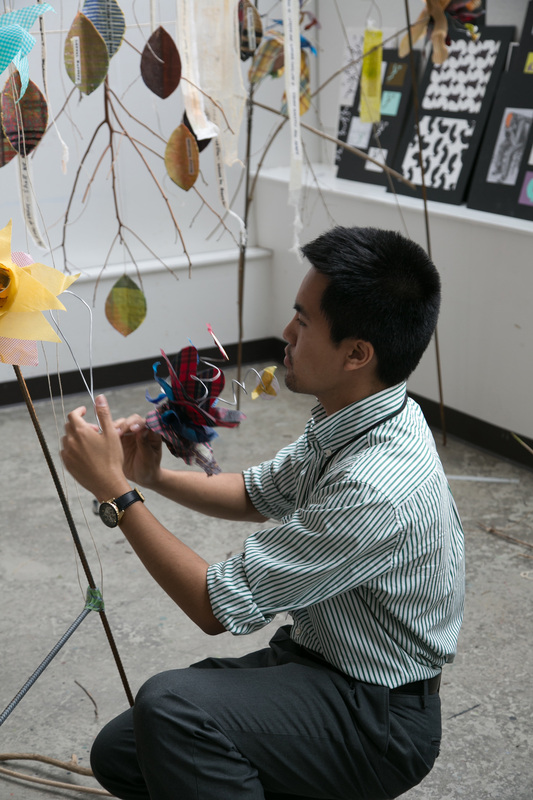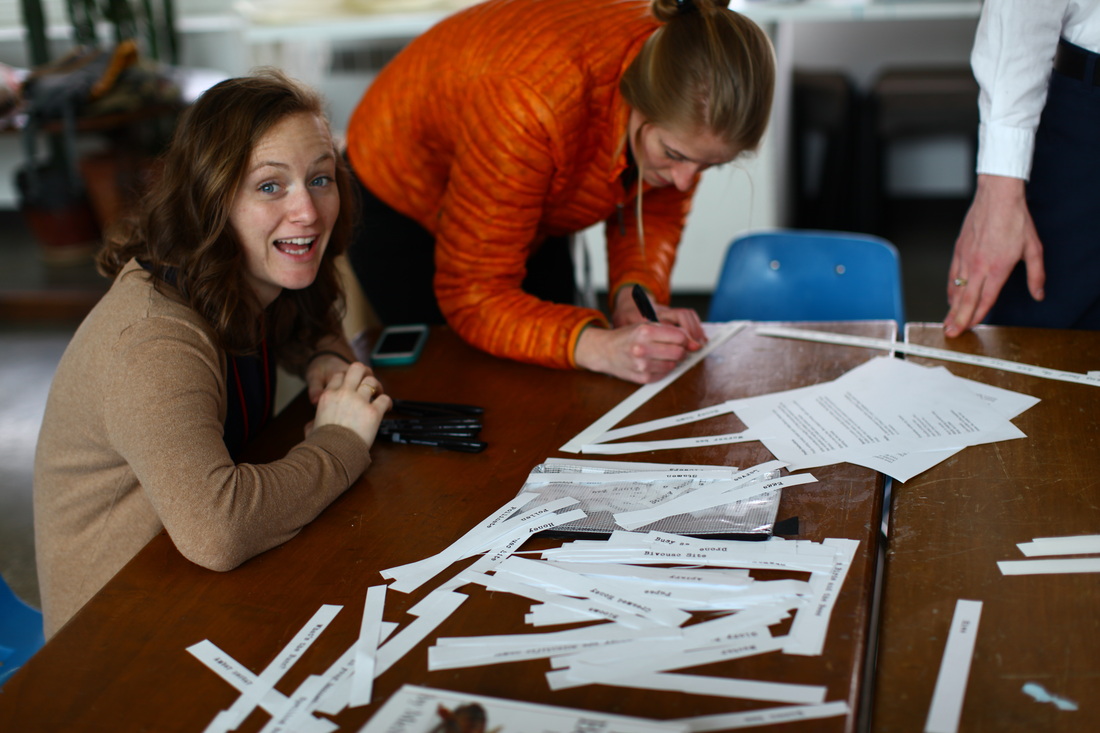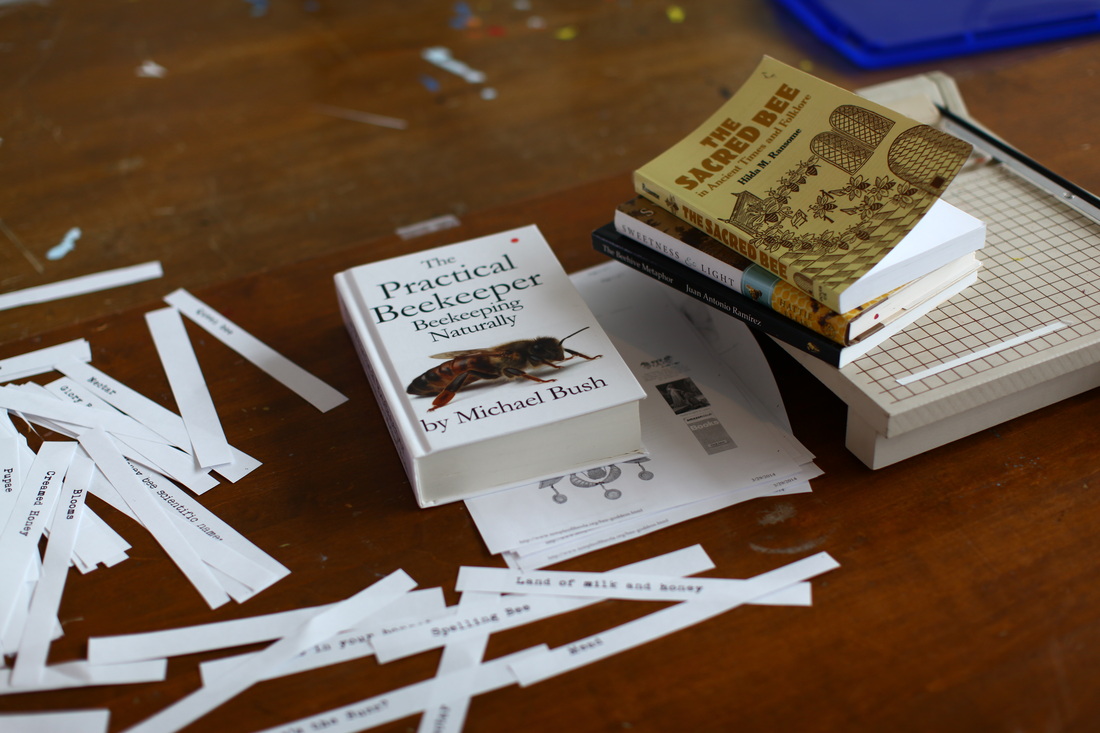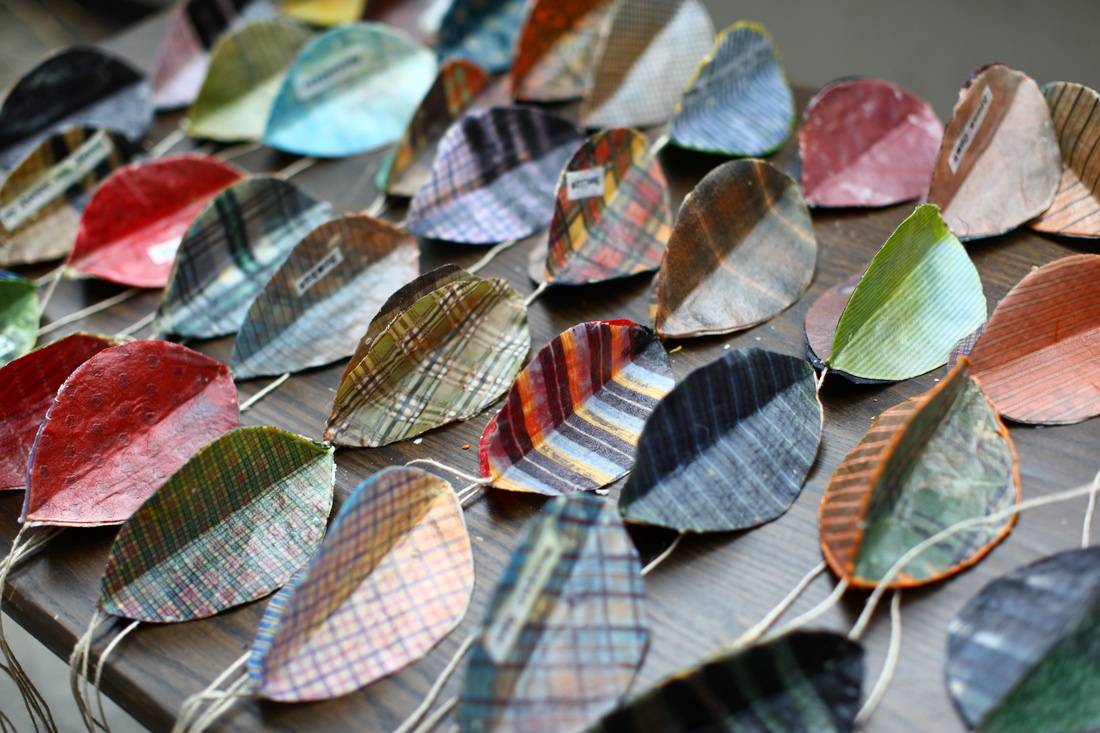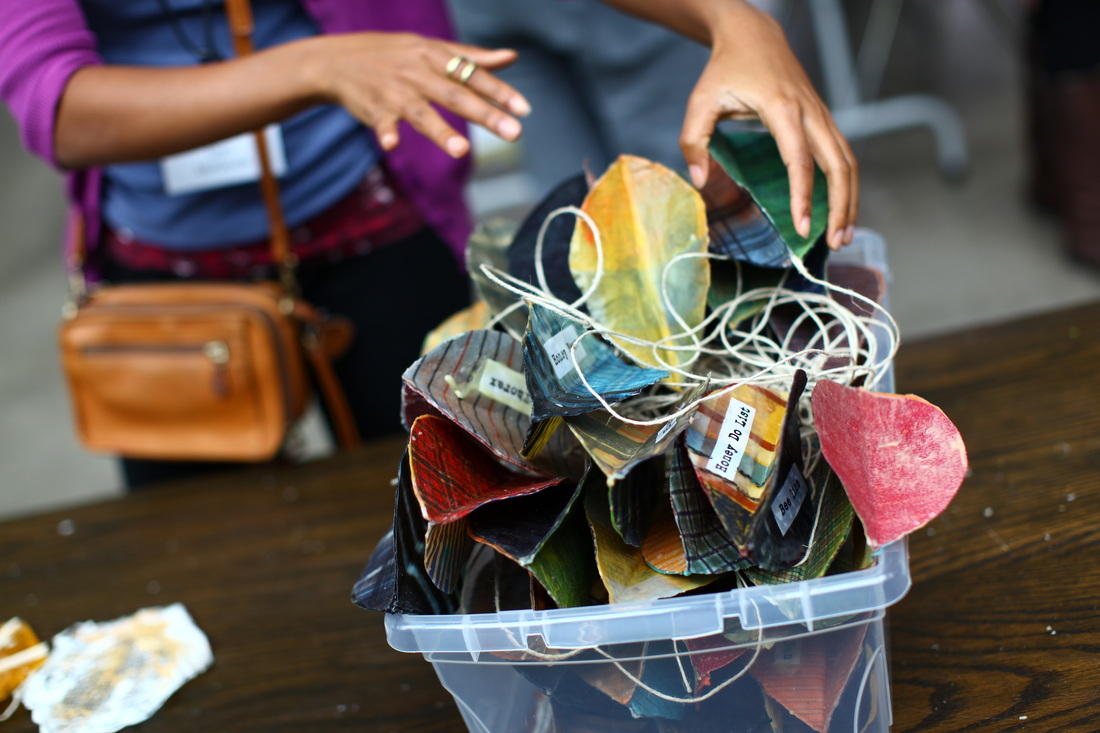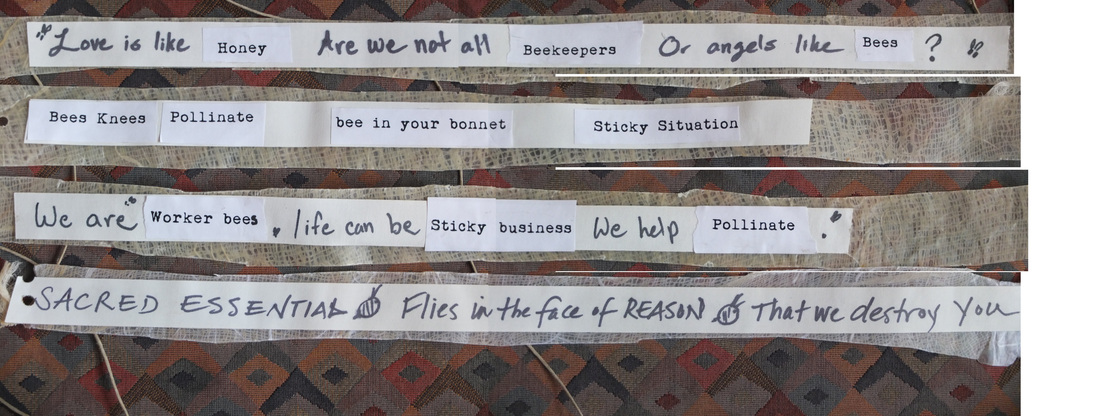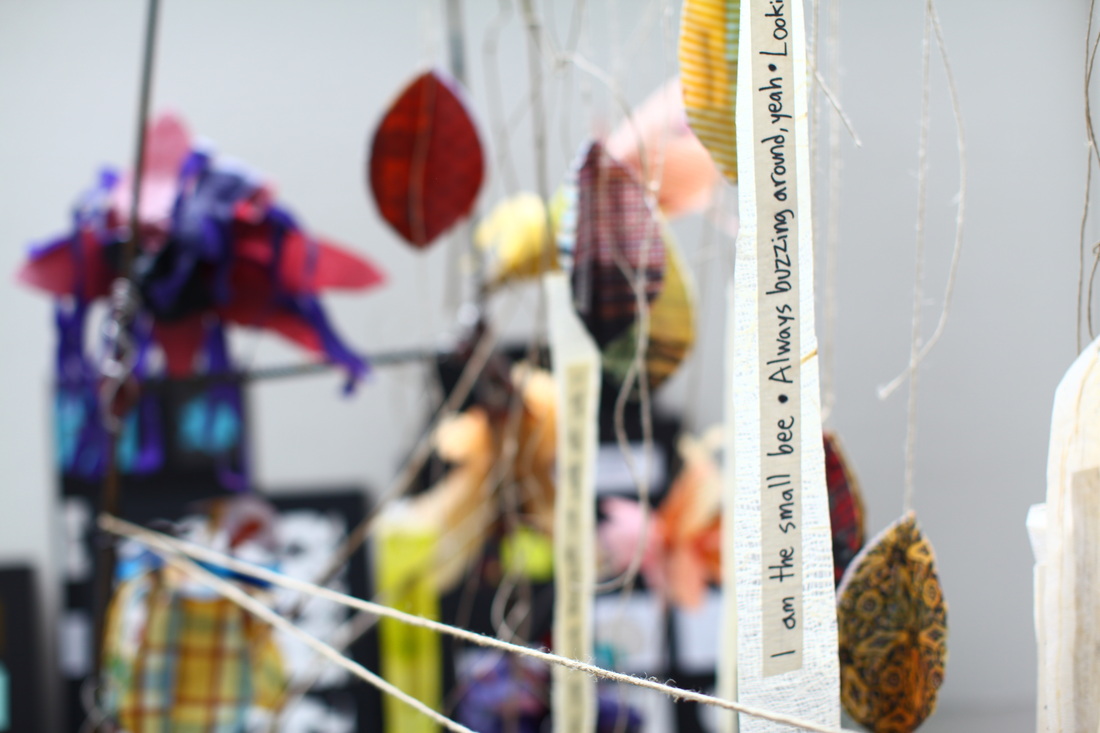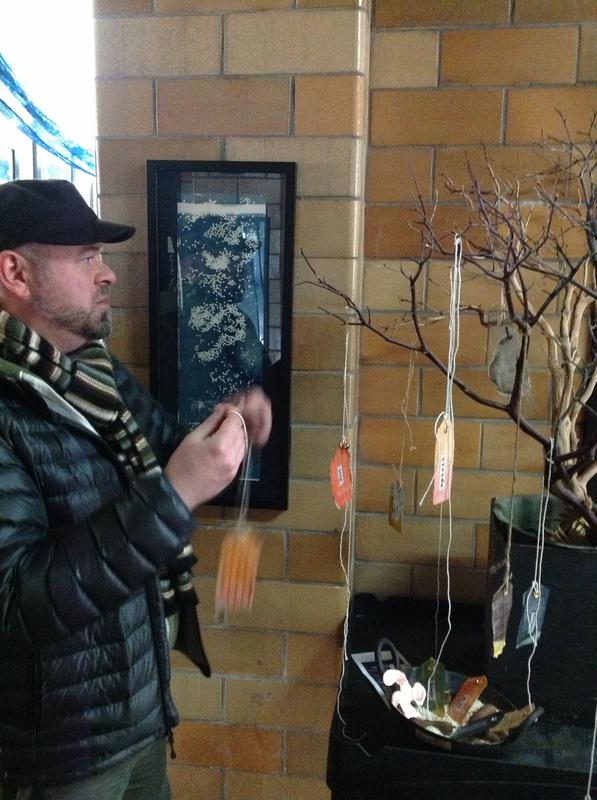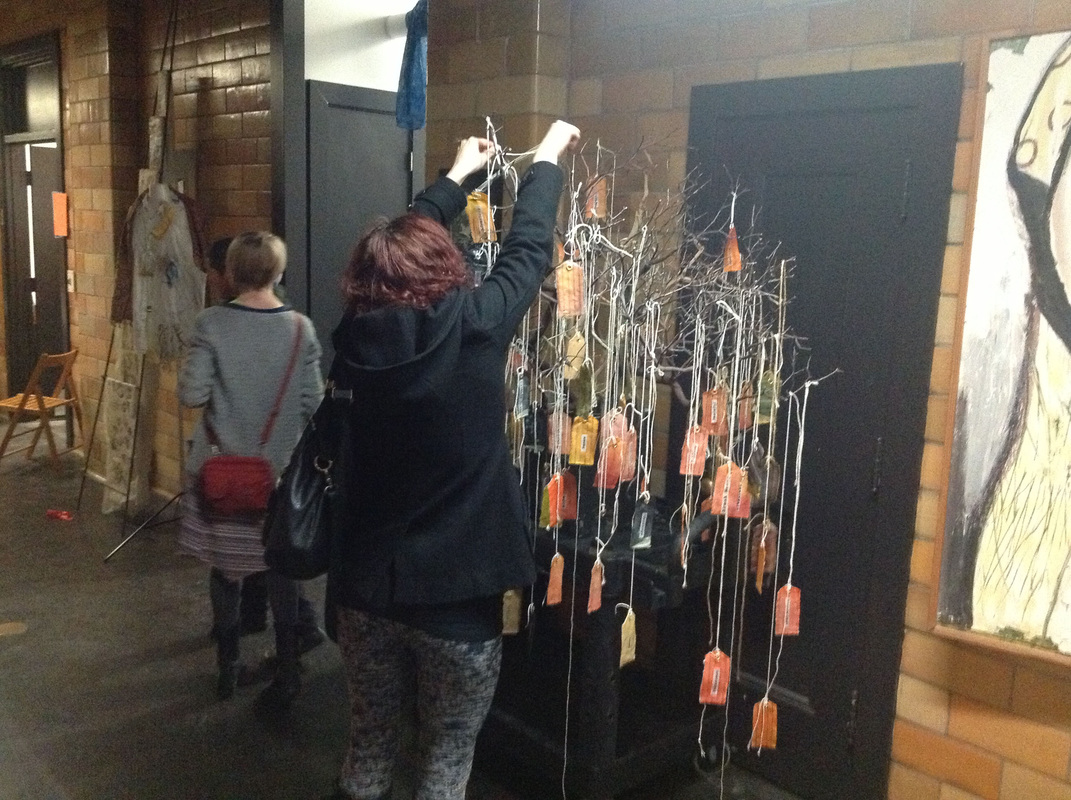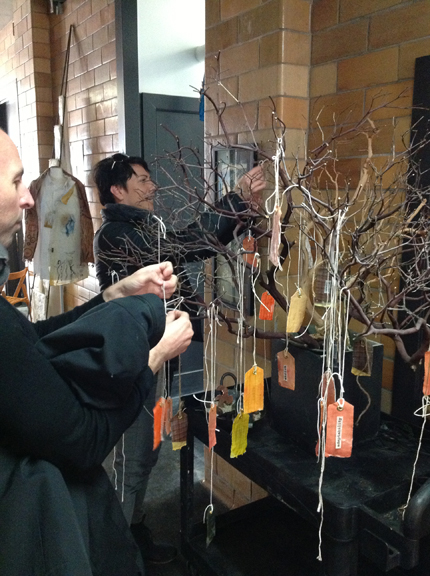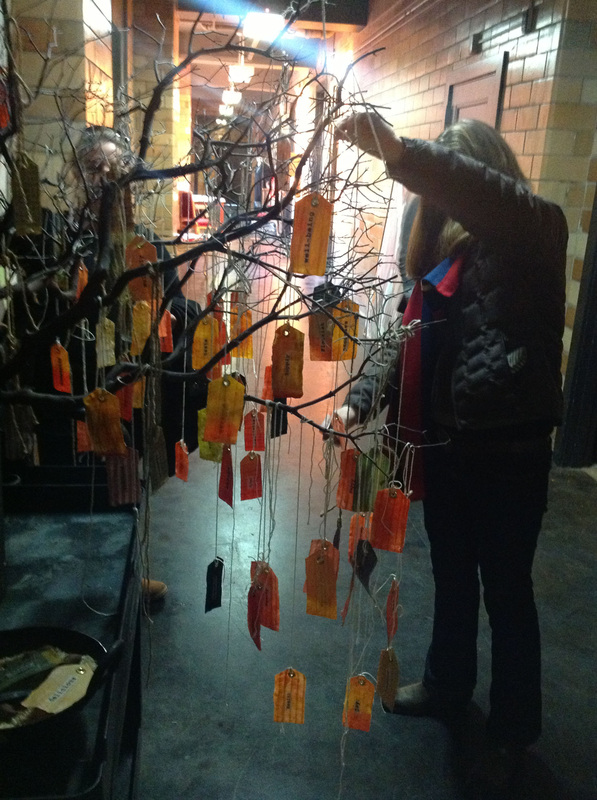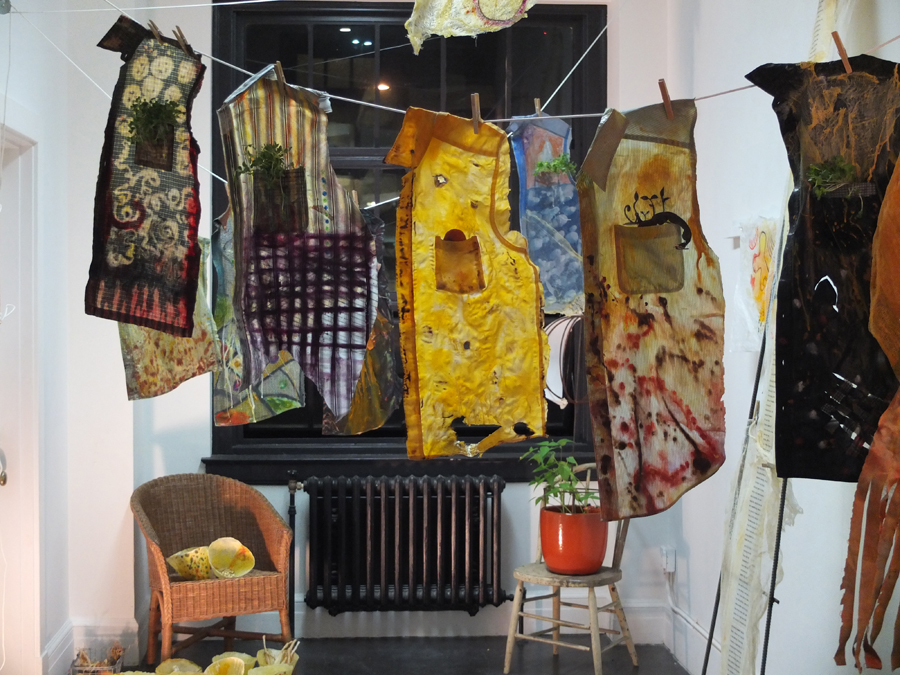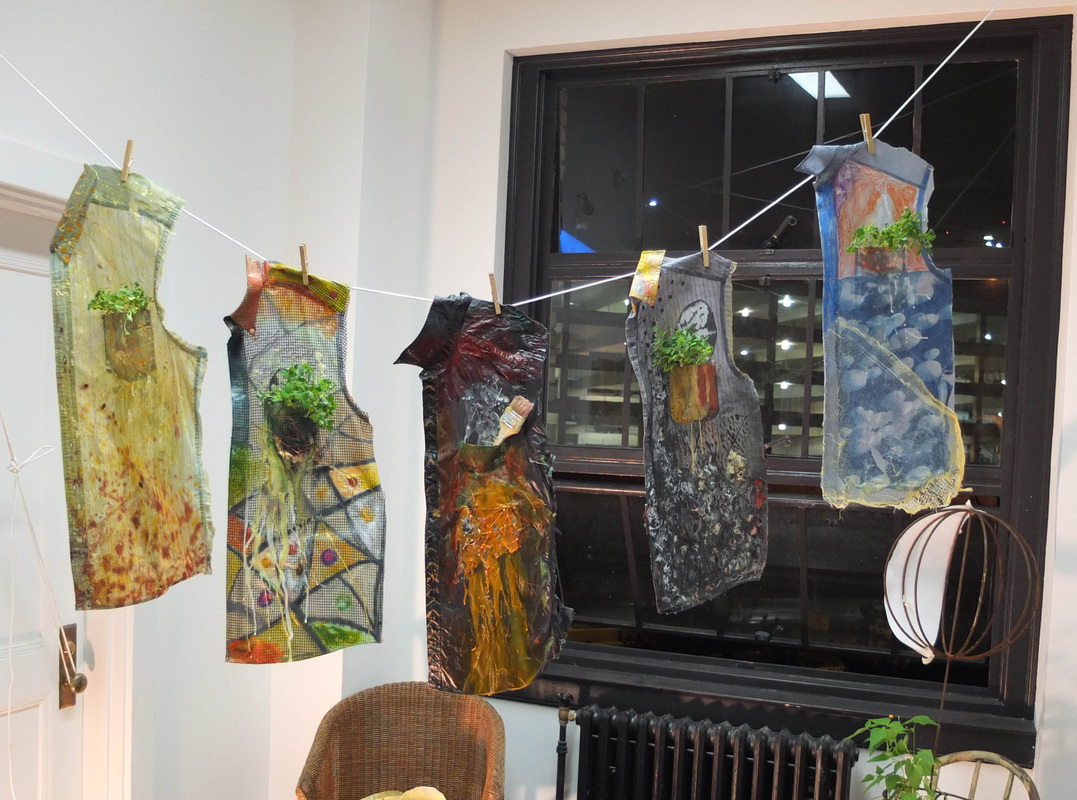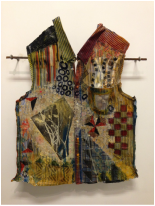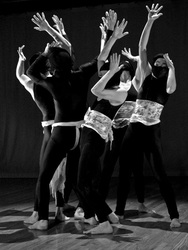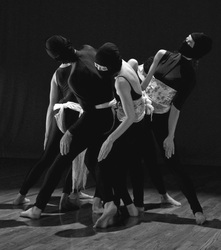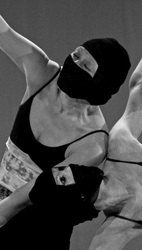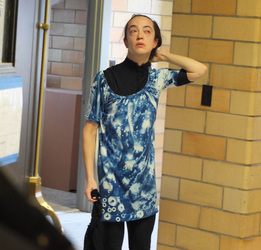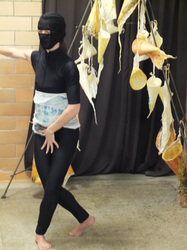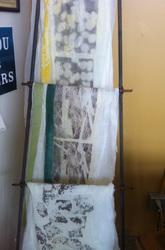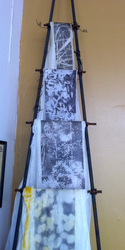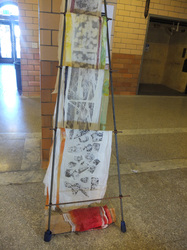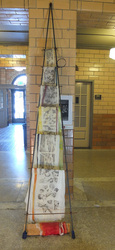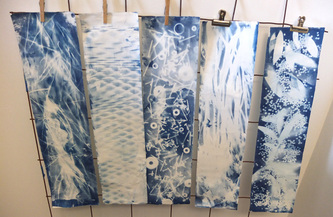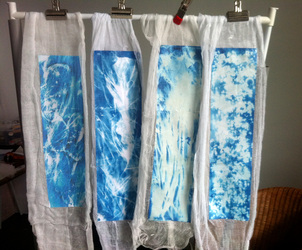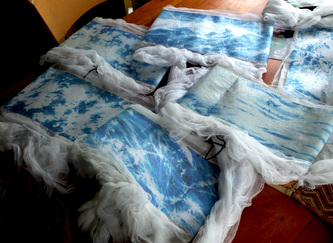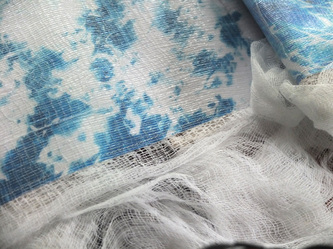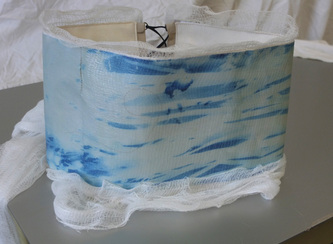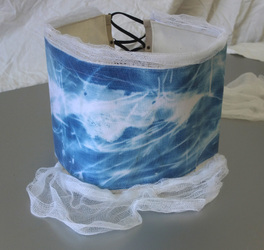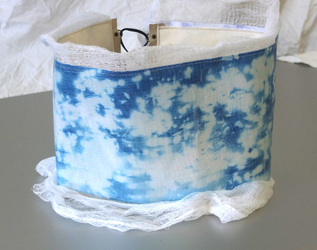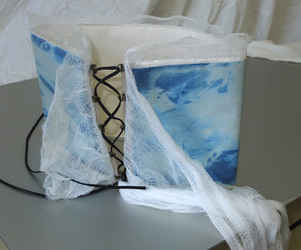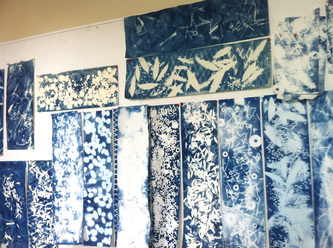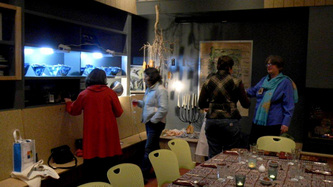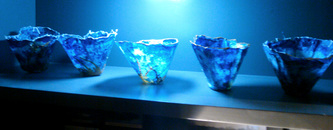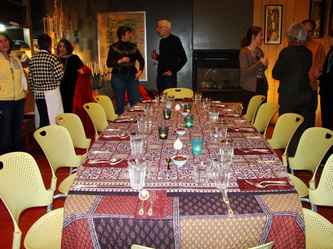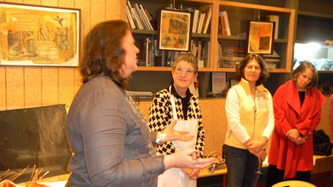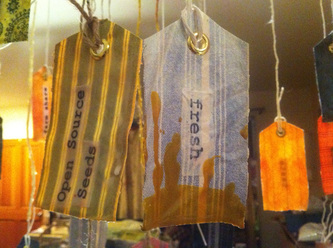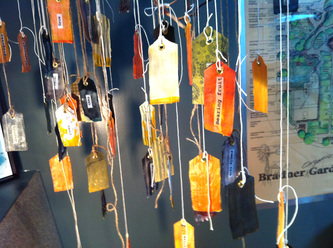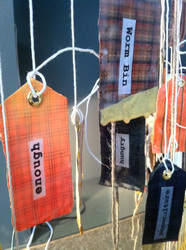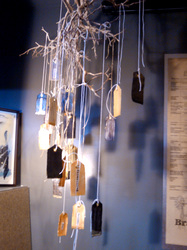Installation and Performance Art
Ecotone Poetry, the never ending poetry interactive
Selections from "Butoh in the Ecotone"
March 7, 2015
Butoh in the Ecotone
An Exhibit, a performance, an interactive project
Wall Art, Costume art, Food art, props, by Isobel Davis
on the walls, an exhibit of cyanotypes and mixed media, Costumes, cyanotype on cloth, Prop baskets: Dried fungus, Tastes: appetizers and drink, poetry interactive, by Isobel Davis
Dancers:
Haruko Crow Nishimura, Sherri Brown, Alan Sutherland
Photo Credit: Wendy Simons Photography
Butoh in the Ecotone
An Exhibit, a performance, an interactive project
Wall Art, Costume art, Food art, props, by Isobel Davis
on the walls, an exhibit of cyanotypes and mixed media, Costumes, cyanotype on cloth, Prop baskets: Dried fungus, Tastes: appetizers and drink, poetry interactive, by Isobel Davis
Dancers:
Haruko Crow Nishimura, Sherri Brown, Alan Sutherland
Photo Credit: Wendy Simons Photography
|
Butoh in the Ecotone
detailed description |
April 2014
Beeline to the Land of Milk and Honey
with Pollinator's Garden, Portrait Gallery of Endangered Fruits and Vegetables and Sweet Talk in the Swarm
a workshop and installation at Principia College, Elsah, Illinois, 2014
Beeline to the Land of Milk and Honey
Isobel created and lead a socially engaged participatory workshop at a Public Affairs conference on sustainability at Principia College in March 2014. Participants contributed elements and helped assemble an installation addressing the plight of the honey bee. The social engagement created awareness, advocacy and a cultural experience. Our current relationship with honey bees is economic, impacting 1/3 of our food crops, but our romance with honey bees goes back millenniums in cultural significance, referenced in poetry, art and religion. The art and poetry created for the installation reflects this multi-facetted relationship with bees.
One element of the piece is the "Pollinator's Garden". Participants created oversized flowers in colorful design to attract humans in order to cross pollinate the community consciousness with messages about bees. The blooms were made out of repurposed shirts from the Goodwill bins, bathed in bees wax.
Another element, the "Portrait Gallery of Endangered Fruits and Vegetables - and things reliant on bees” is a visual reminder of the huge meal time impact it would be to loose bees as pollinators. Participants drew images of things impacted by loss of these fruits and vegetables and hung them with the portraits of the fruits and vegetables reliant on bees for viability. Inkjet photo prints, encaustic wax medium and tape. Source photos were mostly taken by Karlin Krishnaswami.
Thirdly, "Sweet Talk in the Swarm" participants were invited to create Senryu/Haiku, taking terms from Isobel’s collection of the lexicon of the bee world and relating it to human life or to nature in short poems, on waxed rice paper strips to hang below the swarm. The swarm consists of individual 3-d hanging shapes that hold bee phrases that we have adopted into our language like “bees knees” or “bee in her bonnet”. The pieces are repurposed shirt fabric, beeswax, paper and string.
“Take the honey with the milk, drink of it before the rising of the sun, and there shall be something in thy heart that is divine”. -Berliner Zauberpapryrus
Hilda M. Ransome. The Sacred Bee in Ancient Times and Folklore. Houghton Mifflin Co. – 1937
Isobel created and lead a socially engaged participatory workshop at a Public Affairs conference on sustainability at Principia College in March 2014. Participants contributed elements and helped assemble an installation addressing the plight of the honey bee. The social engagement created awareness, advocacy and a cultural experience. Our current relationship with honey bees is economic, impacting 1/3 of our food crops, but our romance with honey bees goes back millenniums in cultural significance, referenced in poetry, art and religion. The art and poetry created for the installation reflects this multi-facetted relationship with bees.
One element of the piece is the "Pollinator's Garden". Participants created oversized flowers in colorful design to attract humans in order to cross pollinate the community consciousness with messages about bees. The blooms were made out of repurposed shirts from the Goodwill bins, bathed in bees wax.
Another element, the "Portrait Gallery of Endangered Fruits and Vegetables - and things reliant on bees” is a visual reminder of the huge meal time impact it would be to loose bees as pollinators. Participants drew images of things impacted by loss of these fruits and vegetables and hung them with the portraits of the fruits and vegetables reliant on bees for viability. Inkjet photo prints, encaustic wax medium and tape. Source photos were mostly taken by Karlin Krishnaswami.
Thirdly, "Sweet Talk in the Swarm" participants were invited to create Senryu/Haiku, taking terms from Isobel’s collection of the lexicon of the bee world and relating it to human life or to nature in short poems, on waxed rice paper strips to hang below the swarm. The swarm consists of individual 3-d hanging shapes that hold bee phrases that we have adopted into our language like “bees knees” or “bee in her bonnet”. The pieces are repurposed shirt fabric, beeswax, paper and string.
“Take the honey with the milk, drink of it before the rising of the sun, and there shall be something in thy heart that is divine”. -Berliner Zauberpapryrus
Hilda M. Ransome. The Sacred Bee in Ancient Times and Folklore. Houghton Mifflin Co. – 1937
Walk this Way: the Lexicon of Sustainability
The project was staged at an open studio event at Inscape Arts in December, 2013. Visitors came in to the studio and were invited to choose one word that resonated with them from a wall of tags labeled with words divided into 3 categories: fears/threats, action/working words, hopes and qualities of experience related to sustainable food. Then they were directed to take them down a hall to some branches installed in the foyer to hang their tag.
Results: 119 people chose tags to hang. 14 were fears and threats, 22 were working terms, 83 tags were bright colored and had labels representing the qualities and hopes of sustainable meal time.
Edible Parts: Grow, Anytime, Anywhere
An installation that plays with the food justice idea of growing food anywhere because we can, with the idea of increasing food availability in simple basic ways. The installation includes laundry lines of repurposed shirt pieces as individual canvases for encaustic wax paintings, with pockets holding living, growing sprouts. Included in this installation is a prose poem on the topic of growth on a personal scale and as a response to destruction and tragedy.
BUTOH DANCE COSTUMES AND SCULPTURE : "Divide by Zero"
Integrated in the Choreography of Sheri Brown & Co.
Explores the idea of breaking boundaries to find the infinite in the tangible. The costumes incorporated cyanotype impressions and textures from seeds, rocks, grasses and other natural elements. The sculptures specifically conceptualize the idea of infinite as the ladder comes together to suggest the foreshortening of two straight lines infinitely traveling away from us. The entry arch of cones, diminishing in size as they climb the ladder. The fabric, which bends over each rung, creates a flowing stair step waterfall, another symbol of infinite.
EAT WITH THE WORLD: The Most Common Meal
An art exhibit in collaboration with Dinner in the Winter Garden, a fundraising dinner to benefit the local Rainier Valley Food Bank.
Bradner Gardens Park | Feb. 12, 2012
This work is inspired by empathy. Eat with the World honors the interconnection of earth’s inhabitants and the effect that our food decisions have on others. The group of vessels were created to speak to the hunger issue many communities face. They are coined “Paradox in Rice” and represent the empty bowl, hunger as experienced by victims of drought or famine, yet the vessels are also full, as the vessel walls include the ghosted cyanotype images of rice.
Another part of the work is a mobile of words on fabric tags entitled “Walk this Way”. This work looks at our use of words and how they trigger emotions around food and represent the social psyche regarding meal time, change, food production and the climate. Dangling clothes tags made out of work shirts and colored wax relay what have become media buzz words around our personal associations with food. The dark tags voice words of fear and words that define the problem. The muted colored tags include words of practical effort. The bright colored words are the positive associations we have with food, the qualities and inspiration needed for moving forward. This work is made interactive with viewers choosing a tag from the collection and hanging it on a branch to collectively make an 'orchard' of tags.
The techniques used to create these works combine cyanotype and encaustic processes that incorporate paper, cloth, wire and wood.
Another part of the work is a mobile of words on fabric tags entitled “Walk this Way”. This work looks at our use of words and how they trigger emotions around food and represent the social psyche regarding meal time, change, food production and the climate. Dangling clothes tags made out of work shirts and colored wax relay what have become media buzz words around our personal associations with food. The dark tags voice words of fear and words that define the problem. The muted colored tags include words of practical effort. The bright colored words are the positive associations we have with food, the qualities and inspiration needed for moving forward. This work is made interactive with viewers choosing a tag from the collection and hanging it on a branch to collectively make an 'orchard' of tags.
The techniques used to create these works combine cyanotype and encaustic processes that incorporate paper, cloth, wire and wood.

